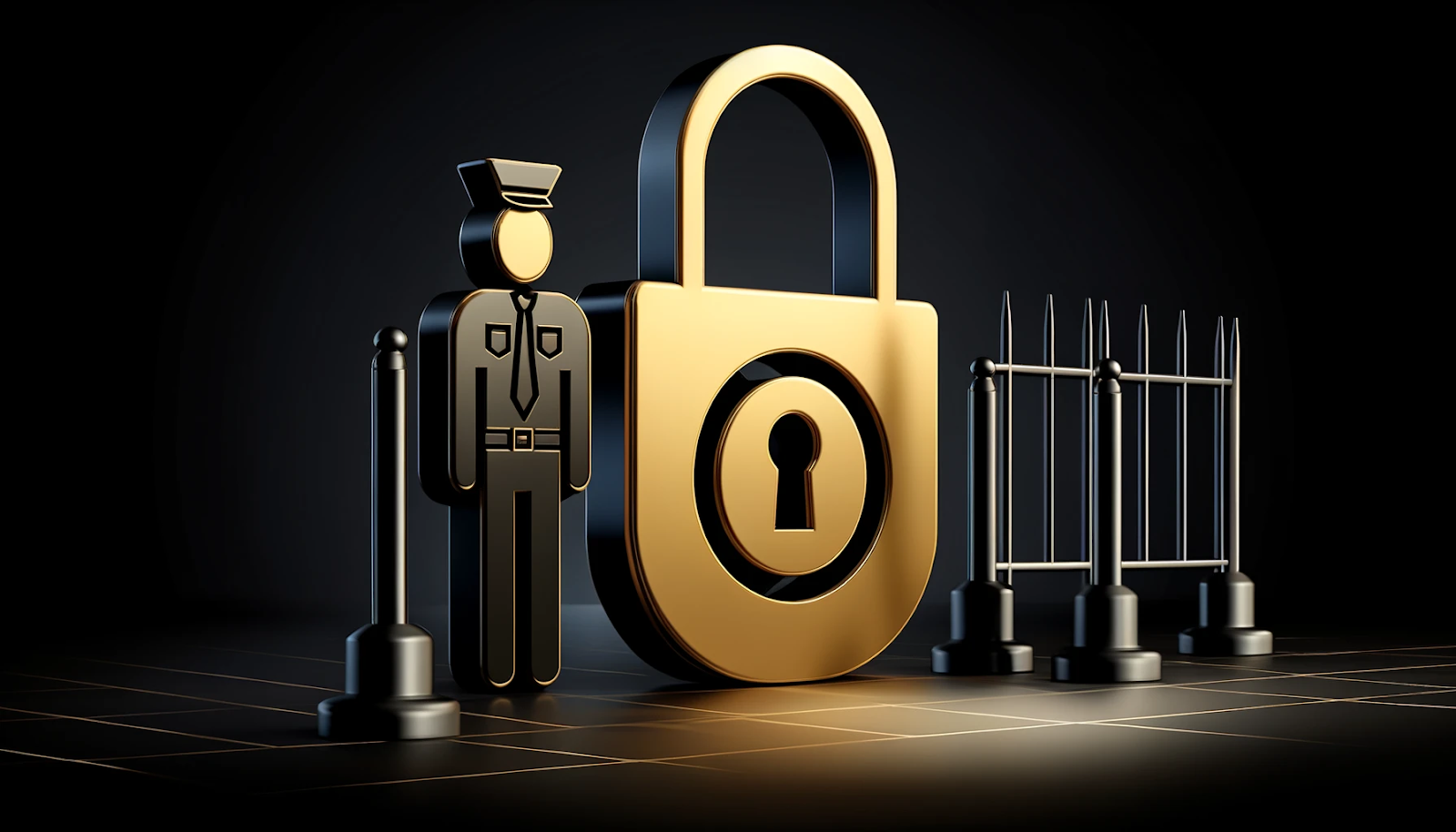Overview of Physical Security Elements
Physical security is a critical aspect of retail management. Ensuring the safety of both property and people requires a multifaceted approach. This article will cover key physical security elements, including locks, barriers, and security guards, to provide property managers, chief security officers, and security company hiring managers with a comprehensive understanding of best practices.
Locks: The First Line of Defense
Locks are the most basic yet essential component of physical security. There are various types, each offering different levels of protection.
- Deadbolts: These are stronger than standard locks and provide higher security. Deadbolts should be installed on all exterior doors.
- Electronic Locks provide convenience and security by allowing access through key cards, codes, or biometric data. They can be easily managed and monitored.
- Padlocks: Often used for securing gates and outbuildings, padlocks are versatile but should be high-quality and resistant to cutting or picking.
Best Practices for Using Locks
- Regularly check and maintain locks to ensure they function correctly.
- Change locks immediately if keys are lost or stolen.
- Use high-security locks with features like anti-pick pins and reinforced strike plates.
Barriers: Physical Deterrents
Barriers are physical deterrents to unauthorized entry, ranging from simple fencing to more sophisticated systems.
- Fences and Gates: These define the perimeter and control access points. Opt for tall, robust fencing with anti-climb features.
- Bollards: Installed to prevent vehicles from ramming into storefronts, bollards are essential for protecting property and pedestrians.
- Security Grilles and Shutters: These provide added protection for windows and doors, particularly during non-business hours.
Effective Use of Barriers
- Ensure barriers are high enough and robust to deter climbing or breaching.
- Combine barriers with surveillance systems for enhanced security.
- Regularly inspect and maintain barriers to ensure they remain effective.
Security Guards: Human Presence
Security guards play a vital role in the physical security of retail establishments. Their presence can deter criminal activity and provide an immediate response to incidents.
- Stationary Guards: Positioned at entrances or critical areas, stationary guards control access and monitor activities.
- Patrolling Guards: These guards move around the premises, providing a visible deterrent and checking for any signs of trouble.
- Armed vs. Unarmed Guards: Depending on the risk level, guards may be armed or unarmed. Armed guards offer a higher level of security but require more rigorous training and oversight.
Optimizing Security Guard Deployment
- Train guards thoroughly in both security protocols and customer service.
- Equip guards with communication devices to stay connected with other security personnel and law enforcement.
- Rotate guards regularly to prevent complacency and ensure vigilance.
Integration of Security Measures
Combining various security measures enhances overall effectiveness. Here’s how to integrate these elements:
- Layered Security Approach: Use multiple layers of security (e.g., locks, barriers, guards) to create a more robust defense.
- Technology Integration: To complement physical security measures, incorporate security systems such as alarms, CCTV, and access control systems.
- Regular Audits: Conduct regular security audits to identify vulnerabilities and update security measures accordingly.
FAQs
Q: How often should I change the locks on my retail property?
A: It’s advisable to change locks immediately if keys are lost or stolen and routinely every few years to maintain security.
Q: What type of barriers are best for preventing vehicle intrusion?
A: Bollards are highly effective in preventing vehicles from ramming into storefronts. Ensure they are properly installed and maintained.
Q: Should security guards be armed?
A: This depends on your location's risk level. High-risk areas may benefit from armed guards, while lower-risk areas might only require unarmed guards.
Q: How can I ensure my security guards are effective?
A: Provide thorough training, equip them with communication devices, and rotate their positions regularly to maintain high levels of vigilance.
Implementing these physical security measures—locks, barriers, and security guards—can significantly enhance the safety and security of your retail establishment. Regularly reviewing and updating these measures will ensure ongoing protection against potential threats.
.png)
.png)
.png)

.png)
.png)

.png)
.png)
.png)
.png)
